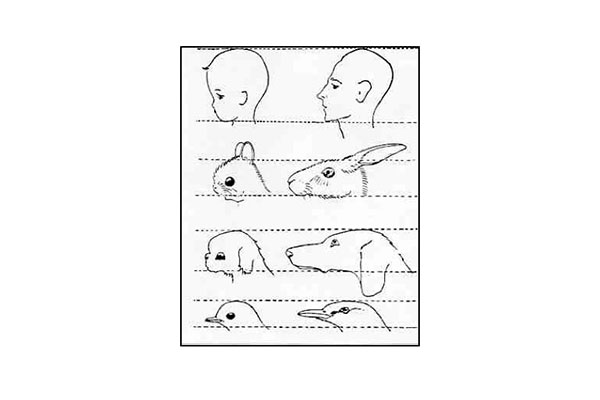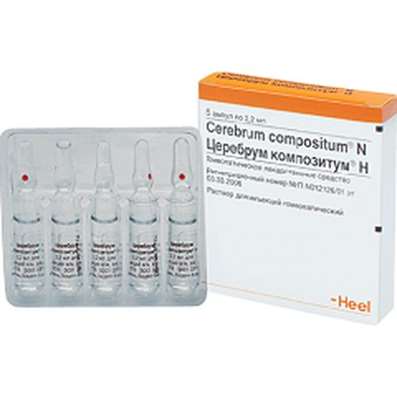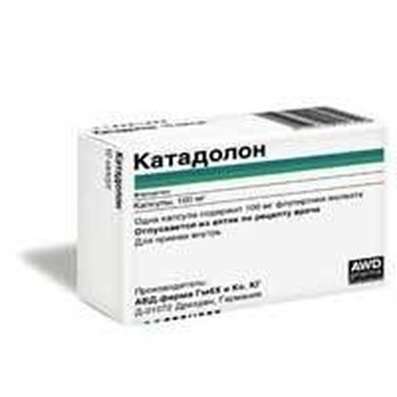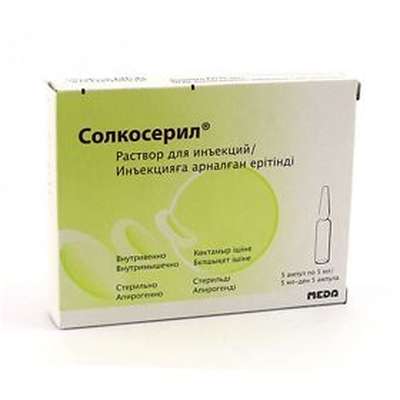Physiology of maternal behavior
15 Dec 2016
How are parent-child relationship, which neurotransmitters are involved in this process and what determines maternal behavior.

During the evolution of the animals formed a large number of congenital forms of behavior - unconditioned reflexes and complex systems (instincts). The significance of innately specified behavior is particularly great in the case of organisms with a short duration of life. This refers primarily small invertebrates. For example, the wasp-Pompilius emerge from pupae in the spring, and there are in the stage of only a few weeks of adults. During this time, the female must meet with the male, dig a hole, catch and paralyze prey (spider), drag it into the hole, lay an egg, seal the hole, then dig a new hole and so on. It can be seen that the wasp emerges from the pupa is already fully ready to fulfill its inherent biological activity. Contribution learning processes Pompilius behavior is relatively small. So, it can and must remember the location of the place of their burrows, which requires the formation of appropriate skills (reflex).
To improve mental and behavior ability – Cortexin, Cogitum, Picamilon, Noopept, Semax, Phenotropil would help.
In the case of highly organized vertebrates situation is quite different. For example, a cub is born blind and helpless at birth and although he is present a number of unconditioned reflexes, but not enough for a full life. With the growth of an intensive training, resulting in a baby gradually becomes ready for independent living. In other words, over the innate (genetic) specified behavioral programs "is built" a large number of additional skills formed.
We know quite a number of classifications of congenital forms of animal behavior. As an example, the one that is designed by academician PV Simonov, who proposed to allocate three groups of unconditioned reflexes: vital, role ( " Zoo-social ") and self-reflections. Vital behavioral programs can be defined as to preserve the life of the organism (food, drinking, defense, etc..). Zoo-social options are those innate behaviors that arise in the interaction with other individuals of their own species (sex, territorial, inside the pack). By self-reflections attributed reaction is not related to adaptation to the current situation, as it were "facing the future" (Research, imitative, game).
On the part of the parents, especially the mother, this set of innate responses includes the construction of the nest-seekers, feeding, cleaning, dragging the young, protect them, and later - the game and "education". This starts the function is performed by the look and smell of a baby, the sound it makes, as well as changes in hormonal status of the female. From the side of the baby, we can also observe a significant number of congenital reactions, aimed at female. This sucking mother's desire for physical contact with her, when carrying the fading reaction, "conscription shouts" left alone a newborn, the reaction sequence. At the same time one can observe the flow of the processes of training, allowing young in the future to implement other forms of normal behavior Zoo-social. Animals raised in isolation, are characterized by disorders of this behavior and can not normally interact with individuals of their own species. For growing up without parents of young monkeys are characterized by the so-called pose self-exposure when baby grabs his hands the body and head, trying to somehow compensate for his loneliness. This shows that the desire for communication, affection, mutual touch has an innate basis.
Manifestations of the parent behavior

The most common object, the example of which we study the mechanisms of maternal behavior are white laboratory rat. The complex of parental reactions consists of three main components. Firstly, it is an active maternal behavior, including the construction of the nest, carrying babies and lick. Secondly, the inactive behavior of the female during feeding calves (adoption poses for feeding). Finally, special protection is considered young ("maternal aggression"). To cope with stress – use Phenibut, Afobazol, Phenazepam and Selank.
Construction of the nest is to transport the materials by mouth or pushing their muzzle and paws. Moving Young is not only going to the young and their movement, but also sniffing before you take it. Licking newborns is an important component of maternal care, the ability to provide a lag effect on the nervous and endocrine systems offspring. There are just licking the genitals and licks the entire lower half of the body of the newborn, without which the urination and defecation rats in the first days after birth difficult.
Feeding babies is divided according to the type taken by the female poses. One of the most common among them - kyphosis (stand bent) when the female hangs over the brood on fixed-spaced legs. The following position - lying on your back or side, exposing young nipples. In addition, there is a provision on his face, in which the mother is lying on top cubs, without relying on the legs and hunched position when the support with feeding female goes to the rear limbs.
One of the most important components of parental care is the protection of calves - behavior, widespread in many animal species. Despite the fact that the manifestations of maternal aggression can cause serious damage to the very adult, they certainly contribute to the survival of the offspring. Aggressive behavior of female white rats tested in the situation room in the cage of another male-Intruder. It has been shown that maternal aggression accompanied by a general reduction of fear and anxiety and begin to appear in the females already in the last week of pregnancy.
Launch of maternal behavior at first gave birth to the female involves inhibition of the desire to be afraid (to avoid) their offspring and all the more to eat it. This deceleration in the case of white rats is primarily based on the olfactory characteristics of young. Accordingly, the female nervous system innately set out to respond to species-specific odor of the newborn. Smells of this kind that trigger different types of unconditioned reflexes, called pheromones. To determine them in the nasal cavity, there are specific types of olfactory receptors. Of great importance are the characteristic "screams" emitted by pups in the ultrasonic range. They are analogous to an infant crying in humans and also are recognized by the brain innately parents. The intensity and frequency of cries amplified in the uncomfortable situation that helps the mother to focus on the most "suffering" cub (for example, were out of the socket).
Finally, it is important to newborns peculiar appearance. At the same time the visual parent system can allocate their characteristic appearance of the visual characteristics. For many birds it is wide open, brightly colored mouth chick. Using just this innately meaningful stimulus allows cuckoo "control" adoptive parents. As a result, they continue to feed cuckoo even when it exceeds their size several times. A number of animals and people react to such symptoms baby as big protruding forehead, large eyes, a snub nose, round cheeks.
Endowed with these features being looks in the eyes of the adult attractive and nice, someone who should be protected, to patronize. There is the possibility of exploitation of this phenomenon, and this involved the producers of soft toys, cartoons and so on. Another extremely important signal, aimed at parents, is the smile of a baby. Characteristically, children born blind, smiling in the same situations as the sighted (eg, hearing my mother's voice). It is obvious that the ability of blind babies smile can be the result of learning (imitation) and genetically defined.
Violations of maternal behavior are most typical for first births. In this case, the female nervous system often uses only unconditioned reflex program complexity and precision that may not be enough to provide adequate responses (for example, if there are additional stressful factors or hormonal disorders). However, individuals quickly accumulated experience of maternal behavior; formed corresponding conditioned reflexes (skills building nests, caring for calves, etc..), and the behavior of females with repeated childbirth is much more appropriate. In the case of first-time mothers female partially solve the problem allows the previous experience with the cubs, which is typical of gregarious animals, including primates. It is shown that in white rats both males and females in the age of about one and a half months (corresponding to a human age of 10-12) willing to carry dummies newborn pups. The analogy with the game baby dolls is quite obvious.
What is the depth of the "engine" for maternal behavior (and behavior in general)? The answer is: the pursuit of positive emotions and the avoidance of negative emotions. Like all innately important stimuli for us (delicious food, sexual contacts, new information), incentives that trigger parental reaction, activate the brain centers of positive emotions, that is, have a reinforcing effect. The nervous system is initially parent (genetically at birth reflex arcs) is configured to search for such incentives, as well as the ability to modify behavior so that reinforcers often impacted body. Global biological significance of parental behavior is obvious: children growing up, we pass on their genes to offspring, that is, extend the life and ensure the further evolution of our species Homo sapiens.
Physiological mechanisms of maternal behavior
For the organization responsible parental behavior is very complex set of CNS structures. Among them in the first place should be called the medial preoptic area of the anterior hypothalamus and nucleus accumbens transparent partitions (nucleus accumbens).
As is known, in the lower part of the diencephalon - hypothalamic - neurons are receiving not only the information from the outside world (visual, painful tactile signals), but also from the internal environment (blood glucose concentration, salts, hormones). Using this information, the hypothalamus controls the activity of the endocrine glands and the autonomic nervous system, being, in fact, the main center for the maintenance of homeostasis. In addition, the hypothalamus due functioning of many biological needs of the centers (and the implementation of appropriate innately specified behavioral programs).
An example is the area associated with the food unconditioned reflex reactions, - centers of hunger and satiety. They are located in the middle part of the hypothalamus. When electrical stimulation of the hunger center even very well-fed animal begins to eat; irritation of the satiety center, by contrast, leads to the rejection of food. Most of the time the hunger center is inhibited saturation center. But at lower glucose and insulin concentrations in blood (which occurs several hours after a meal) its activated neurons. As a result, on a subjective level there is hunger; Behavioral also develops food motivation can enter reactions in search of food.
The centers of the anterior hypothalamus parental behavior, tend to be more active in females. Although, apparently, the male brain contains all the relevant behavioral program (innate reflex arc). This can be proved by means of electrical stimulation of the medial preoptic area. In this case, the components of parental behavior occur in males, even those species that are never directly involved in the cultivation of offspring (eg, rooster shows reaction eggs hatching). Activation centers parental behavior in vivo occurs in the presence of external stimuli which are sensorial attributes calf, and / or certain hormonal levels.
Indeed, the medial preoptic area severely affected by endocrine control, realized through estrogen, oxytocin and prolactin. The introduction of large doses of each of these hormones causes maternal behavior even in nulliparous white rats (upon presentation of another's pups). Normally, the effects of different hormones co-exist and complement the action innately important sensory signals (calf signs). Recall that estrogens - female sex hormones, whose content remains high throughout the pregnancy is further increased during delivery, and then decreases. Isolation of oxytocin is timed to the moment of birth (a powerful stimulation of uterine contractions); In addition, it enhances lactation affecting myoepithelial breast cells.
To the greatest extent determines the status and the work of the mammary glands prolactin (luteotrophic hormone pituitary gland).
It, along with the estrogen, controls their development during puberty. Next prolactin-dependent stage - the growth and formation of active (capable of secretion) form alveolar apparatus breast during pregnancy. Finally, it is a major stimulator of prolactin release colostrum and milk after childbirth. At the same time it has a strong activating effect on the behavior of the parent centers (medial preoptic area). It is also important that the signals of the mechanical stimulation of the nipples (during suckling), switching through the hypothalamus, the pituitary prolactin increase and cause positive emotions. In other words, the body of mammals is characterized by a feedback loop that combines lactation, maternal behavior and positive emotions (that it leads to the experience of a certain percentage of orgasm during stimulation of the nipples of women).
Communication with the emotion centers of the hypothalamus is carried out primarily through the nucleus accumbens transparent partitions (nucleus accumbens). It refers to the core of the subcortical nuclei (basal ganglia) of the cerebral hemispheres. N. accumbens is one of the most important centers of positive reinforcement of our brain and is activated when the successful implementation of many significant innate behavioral programs - meeting the food, parental, sexual and other needs. The operation of the nucleus accumbens on the subjective level is accompanied by the emergence of variously colored positive emotions. At the same time at the level of the cerebral cortex are formed associations (conditional reflex connections). They occur between neurons that respond to the touch signal initially insignificant, and neurons, triggering the movement of a component (in our case - the parent) behavior. In general it can be said that the activation of n. accumbens is an important condition for learning, provides a "superstructure" of innate reflex arcs acquired behavioral programs.
At the level of the nucleus accumbens neurotransmitter activity is determined by substances such as dopamine and opioid peptides. Dopamine is produced primarily by cells of the ventral midbrain tires axons which reach not only n. accumbens, but also in many areas of the cerebral cortex. Opioid peptides (enkephalins, endorphins, endomorphin) are secreted in small interneurons of the midbrain, the basal ganglia, the hypothalamus. Narcotic drugs similar to dopamine (amphetamines, cocaine), and the opioid peptides (morphine, heroin) cause euphoria, "replacing" real positive emotions. As a result, a person may lose the desire to do any activity directed outwards but aimed at the re-introduction of the drug. Amphetamines, cocaine, morphine suppress parental behavior. Opioid receptor antagonist naloxone, on the contrary, strengthens the care of the offspring. This indicates the prospects of using naloxone in order to attenuate the manifestations of maternal, especially post-natal depression.
It is known that depression after the first birth occurs in 10-15% of women. (Phenibut, Phenazepam would help) It has a negative impact on the relationship "mother - child" and is primarily due to a sharp change in hormonal and / or gestational (generic) stress. Currently, postpartum depression and the possibility of targeted correction examined for specific lines of white laboratory rats, inherently characterized by a number of depression-like behavior change.

 Cart
Cart





